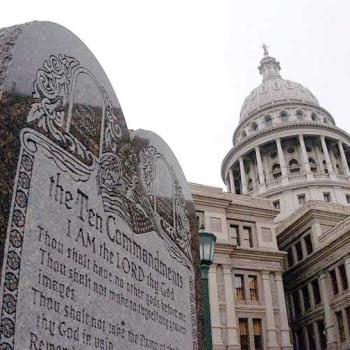This is the second part of a series on how printing technology changed the course of religious history. To read the first part, about the beginnings of print technology in China and how this impacted Buddhism, see The Impact of Printing on Religion: Buddhism in East Asia. This post focuses on the printing press and the Reformation.
The impact of printing on religion in Europe was something like a bomb that utterly changed the religious as well as the political landscape. Before the invention of the first European printing press, ca. 1450, the Catholic Church was the ultimate religious and political power in Europe. A few decades later the Reformation began, and while printing didn’t cause the Reformation it did make the Reformation possible. The Reformation was a 16th century movement that began as an attempt to reform Catholicism but resulted in a large part of the population of Europe leaving Catholicism entirely. The Reformation marked the end of the Middle Ages. And there were religious wars and a lot of violence involved — see, for example, The Saint Bartholomew’s Day Massacre — so the Reformation was a major big deal that changed Europe considerably.
First, I do want to mention what went before printing, especially the famous illuminated Bibles such as the beautiful Book of Kells. From the 5th to the 13th century CE every book produced in Europe was hand copied by Christian monks, a practice that is believed to have begun in Ireland. But then this guy Gutenberg built a printing press.
First, the Gutenberg Bible
Johannes Gutenberg (1400-1458) of Mainz, Germany, was a goldsmith who used his knowledge of metal to cast movable type characters in the Latin alphabet. Then he built a press that resembled a wine press. This was the first printing press in Europe. Gutenberg to this day is credited with inventing movable type, even though movable type had been invented in China about four centuries earlier. And the way Gutenberg cast his metal type characters was similar to Korean methods already in use at the time. Historians disagree about whether Gutenberg might have received some knowledge of Korean type making. Gutenberg first published some pamphlets and calendars, and then in 1452 he published his first Bible, in Latin. He is believed to have published about 180 Bibles in total.
Then, the Reformation
The 180 copies of the Gutenberg Bible by themselves did not change the course of Christianity in Europe, but printing technology certainly did. By 1517, when Martin Luther proposed the Ninety-Five Theses, printing presses were being used throughout Germany and much of the rest of Europe. And Luther saw to it his criticisms of the Catholic Church were printed and circulated.
Before printing, it’s unlikely Luther’s ideas for remaking the Church would have gone beyond a few scholars in Wittenberg. But with printing, the theses — originally published in Latin — were being read widely in Europe within a year. By 1525, half a million copies of the theses and other works by Luther — some in Latin, some in German — were in circulation. Soon John Calvin and other Protestants were publishing away also.
Print technology didn’t cause the Reformation, but the Reformation probably could not have happened without it. Before the 16th century the Catholic Church so dominated Europe that it controlled the dissemination of ideas and information. Printing technology changed that. The Church did its best to put the ink back in the bottle, so to speak, by banning books and by fining, jailing, and even executing printers. But the tide of paper, ink, and the written word was too big and too strong to be stopped. Some historians have documented that the presence of a printing press in any city or region made the establishment of Protestantism there much more likely.
The Position of the Bible in Christianity
Before the Reformation, few Europeans ever read the Bible. Most were illiterate, books were very expensive, and Bibles were nearly all in Latin. It was considered heretical to publish the Bible in another language but Latin. The Church was not comfortable with the idea of common people reading the Bible for themselves.
One of Martin Luther’s principle criticisms of the 16th century Catholic Church was that some of its teachings and practices were not based on the Bible at all, but were opinions of the Pope and councils of the Church. Luther thought that only the Bible, the word of God, was the source of religious truth. This belief became a cornerstone of Protestantism. Luther wasn’t the first person to level this charge against Catholicism, but he was the first whom the Church was unable to suppress for it.
Likewise, the move toward translating the Bible into common European languages, which had begun tentatively before the Reformation, picked up much steam during the Reformation. Thanks to printing, Bibles were no longer prohibitively expensive. And the estimated rate of literacy in Europe rose from 11 percent in 1500 to 60 percent by 1750. Thus, the relationship between Christians and the Bible radically changed from what it had been in the Middle Ages. And this change was enabled by the printing press.
Printing Beyond Christian Europe
Movable type worked beautifully to print texts in the Latin alphabet. For other languages — such as Arabic — there were complications addressed in the next column, which focuses on printing the Quran.














